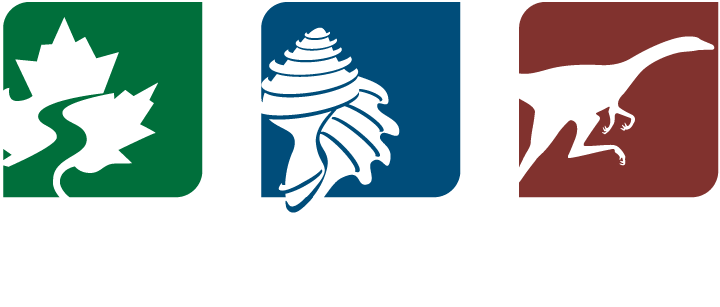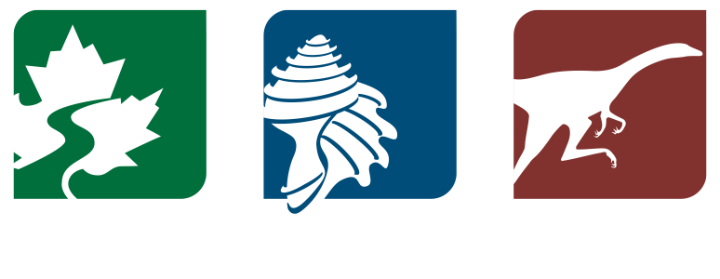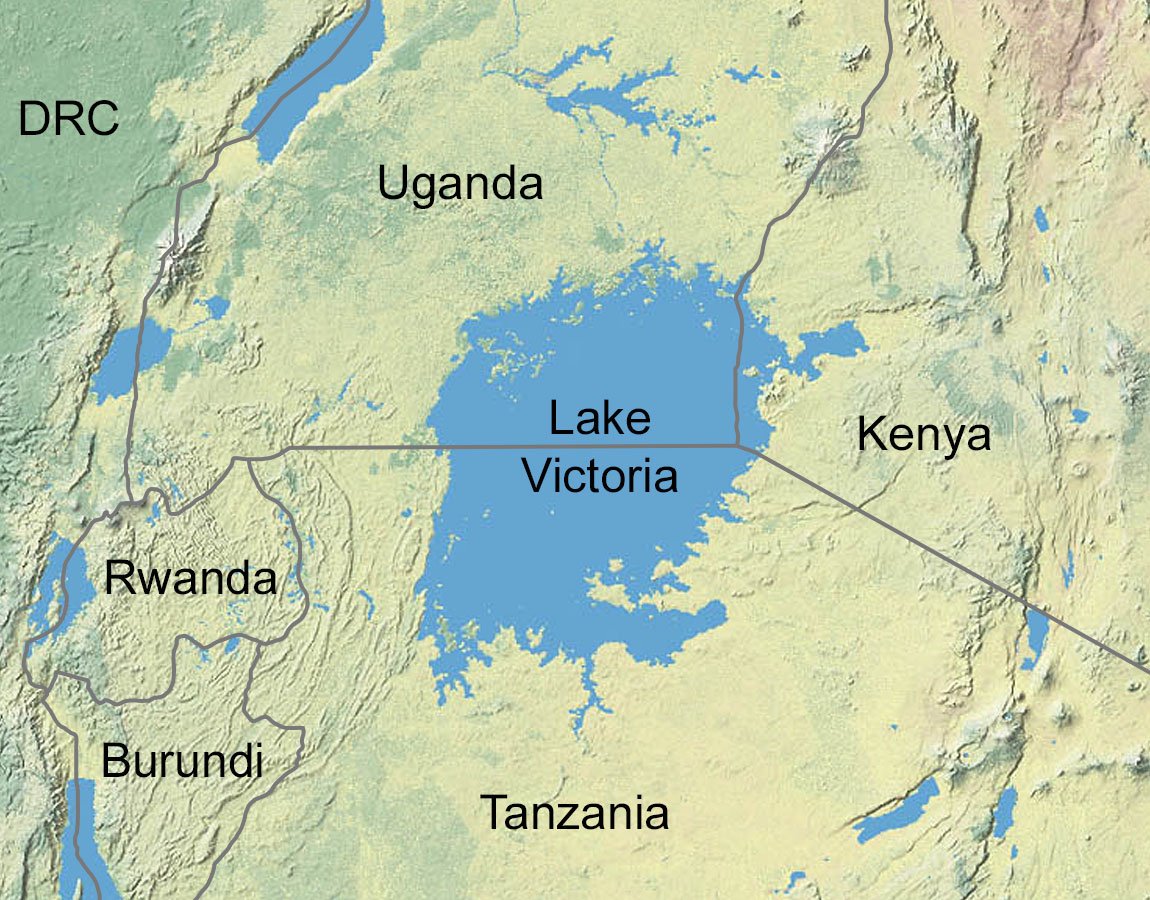HABs in Lake Victoria
Introduction
Africa’s Lake Victoria is the second largest freshwater lake in the world after Lake Superior, one of the North American Great Lakes located on the U.S.-Canada border. It covers an ares of 68,000 square kilometers (26,255 square miles) and is shared by Kenya, Uganda, and Tanzania. More than 42 million people depend on the lake for water and food. It is the largest freshwater fishery in the world, producing about 8% of the global inland fish harvest, and is home to many small-scale fishing communities. It provides direct employment to 200,000 fishers, as well as many fish traders and processors, who are mainly women. The fish from Lake Victoria are widely exported, and they also are critical to local diets, incomes, and food security.
HABs in Lake Victoria
Lake Victoria is central to the wellbeing and the economy of the people who live in the surrounding region. The lake ecology has been heavily impacted by development and industry in the Lake Victoria Basin. Pollution in the lake is partially responsible for the appearance of HABs. Historically, most of the nutrient pollution in Lake Victoria has come from sewage entering the lake. This sewage pollution likely includes pit latrines and other sewage runoff from outside of urban areas. Excess nutrients also reach the lake from erosion and industrial activities, among other sources. The loss of wetlands around the lake has also increased nutrient levels because wetlands help absorb impurities in water flowing into the lake. The excess nutrients reaching the lake promote the development of HABs, especially in shallow bays and gulfs. Winam Gulf in Kenya is one of Lake Victoria’s most productive fishing areas and has been beset by HABs. The gulf neighbors Kisumu, Kenya’s third-largest city.
In Lake Victoria, HABs are caused by cyanobacteria, including Microcystis and Dolichospermum, which can produce cyanotoxins. Exposure to these toxins can cause skin irritation, gastrointestinal problems, and liver damage. Toxins from cyanobacteria have also been found in drinking water drawn from Lake Victoria. Fishers and fish farmers are especially at risk of developing symptoms from exposure to HABs, since they are frequently in contact with lake water. Additionally, HABs weigh down fishing nets and make it hard to feed fish in fish farms because the algal scum on the lake surface can prevent fish food from sinking. HABs can also cause fish kills.
Fisheries in Lake Victoria
The main fish species sought by fishers in the Lake Victoria region include the Nile perch (Lates niloticus), tilapia (a common name for more than one species of cichlid fish) and dagaa (Rastrineobola argentea, also known by a variety of other common names like omena). Nile perch is mostly used for export, though juvenile perch is an important and common local food. Tilapia is the most preferred food fish among the local population. Dagaa is mostly used locally, and, due to its relatively small size, it is eaten whole. It is also used in the animal feed industry. Dagaa is famous for being affordable. It is also desirable because it can be divided into packages of various sizes and has a relatively long shelf life when dried.
Small-scale fishing communities and HABs
HABs in Lake Victoria are a serious threat to small-scale fishing communities, which include households that are often among the world's poorest. Members of small-scale fishing communities around Lake Victoria are likely to be exposed to HABs because they live and work in close contact with lake water. The fish in the lake are an important source of protein for people in these communities. Members of these communities are also dependent on the lake for their income, with few other options for supporting themselves. Thus, they are especially vulnerable to the environmental and health effects of HABs.
HABs in Lake Victoria can release harmful toxins known as microcystins that can affect the health of humans and animals. Exposure to microcystins from HABs can lead to health issues affecting the liver, nervous system, skin, and other organs. People living in small-scale fishing communities have limited access to information about the dynamics of HABs, the potential risks of HABs, and safe fishing practices. This lack of awareness can lead to unintentional exposure to contaminated water. People in small-scale fishing communities may also consume contaminated fish, drink contaminated water, or use contaminated water for other activities, like washing. Small-scale fishing communities are in regions with limited access to healthcare, which can compound the health risks of exposures to toxins made by HABs. Prompt medical attention in case of exposure is very important for minimizing health consequences.
Small-scale fishing communities traditionally rely on indigenous knowledge to manage water quality risks. Effective detection of the species of algae in HABs requires skills and equipment that is beyond their reach. Understanding and addressing the risks of harmful algae in Lake Victoria is crucial for safeguarding the health and well-being of people living in fishing communities and minimizing their exposure to toxins.
Cage aquaculture and HABs
Cage aquaculture, a type of fish farming, has grown from an essentially nonexistent industry with only a small number of farms into to a large-scale commercial industry with several thousand cages in the past 10 years. In Lake Victoria, cages are submerged in the water and used to produce tilapia. Many Kenyan communities are turning to cage aquaculture as a means to fill shortfalls in the wild fish catch. As the cage aquaculture industry continues to expand in Kenya, it is playing a increasing role in human nutrition and food security in the Lake Victoria region.
The health of farmed fish is significantly impacted by HABs. Both the toxins produced by HABs and the water quality changes that stimulate blooms have negative effects on fish health. HABs may be one factor behind the numerous large-scale fish kills that have occurred in Lake Victoria, Kenya, over the last several years.
Fish farms may also contribute to the formation of HABs. Excessive uneaten fish feeds and fish feces both pollute lake waters, adding nutrients that help stimulate the formation of HABs
Cornell Research on HABs in Lake Victoria
What is the focus of this research?
Cornell researchers are currently studying how HABs are changing the socio-environmental system in Lake Victoria. Their research focuses on the the impacts of HABs in a unique setting where people are very dependent on fisheries to earn money and produce food. Environmental changes caused by human activities that create nutrient pollution and drive climate change are shifting the risks and benefits of foods like the fish in Lake Victoria.
The researchers are studying how food systems are affected by environmental change. They are examining how microcystins vary in different fish species in different parts of Lake Victoria across time. Understanding how fish accumulate toxins in their bodies is important, because toxins present in fish could impact the health of people who eat fish from the lake.
The researchers plan to examine how people are changing where they fish and what they eat in response to HABs, and whether that puts them at more risk or less from HAB toxins. The researchers will also investigate how income relates to which fish people eat and how the risks from toxins and nutritional benefits from eating fish affect different groups of people.
How do HABs in Lake Victoria relate to HABs in other lakes?
Blooms in Lake Victoria are frequent and persistent. In some other places, like the U.S., HABs are less frequent and may occur only seasonally. This means that Lake Victoria is likely to have a relatively high concentration of microcystins produced by HABs compared to lakes in some other parts of the world. When blooms are less common, detecting microcystins is challenging and expensive, limiting what can be learned about their impacts. In Lake Victoria, detecting microcystins and tracking their effects should be easier. The situation in Lake Victoria will thus help researchers to understand the uptake of microcystins in fish across the aquatic food web. The findings from Lake Victoria are important for understanding the impacts of HABs in other lake systems that are harder to study.
Who are Cornell’s partners?
Development of the Harmful Algal Blooms (HABs) section of the Cayuga Nature Center website was supported by a National Science Foundation grant to Kathryn Fiorella, Christopher Barrett, and Peter McIntyre of Cornell University (BCS 2009658). The views, findings, conclusions, or recommendations expressed in this website do not necessarily represent those of the National Science Foundation.
















